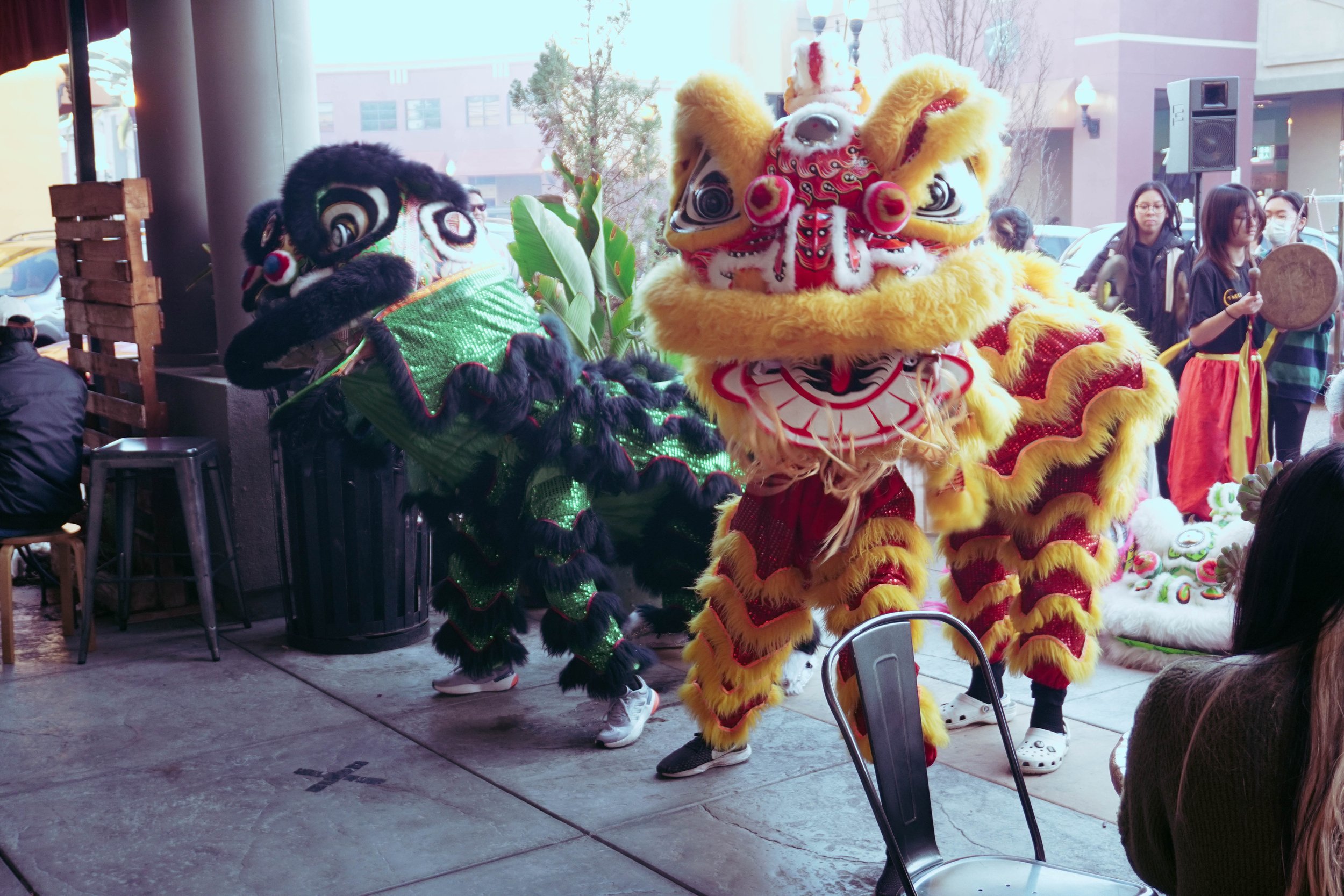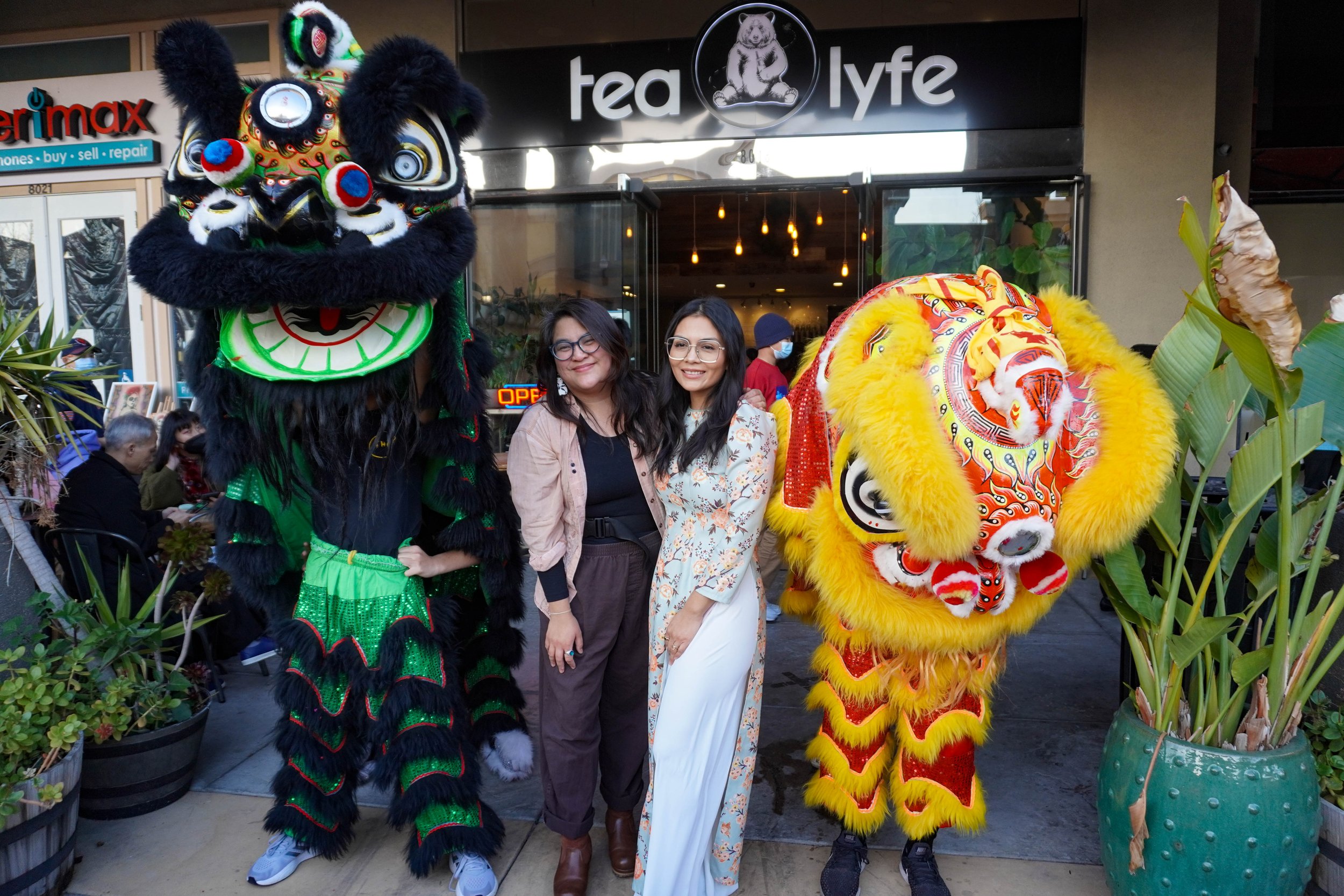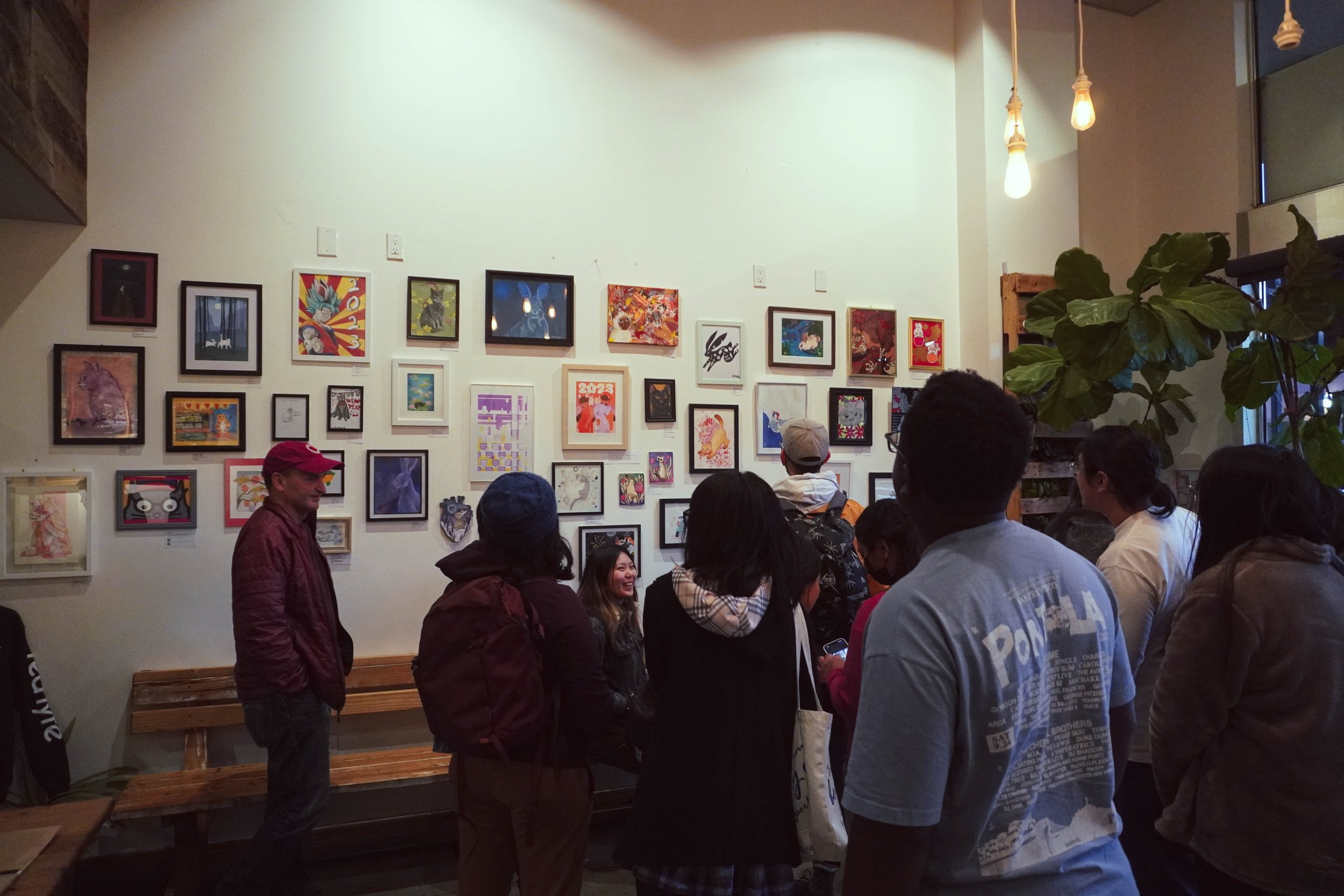LUNAR - INTERVIEW WITH QUYNH-MAI NGUYEN
LUNAR - INTERVIEW WITH QUYNH-MAI NGUYEN
Quynh-Mai Nguyen knew she wanted to use art to celebrate the Lunar New Year because it was the missing component from the celebrations she experienced growing up going to cultural plazas like Little Saigon with family in San José. After speaking to different community members, they were for it; Tealyfe was for it, they’ve been there from the start. Deep gratitude to Tealyfe for stepping up and creating community space; to be able to carve space into a nostalgic place like Tealyfe and Little Saigon brings something contemporary, something new, of the perspective of the new generation across different artistic mediums like fiber, digital art, photography, and craft. It still gives Quynh-Mai butterflies to coordinate and publicize a call for art but it stems from excitement.
People get nervous about their artistry not being at the level their own self-critic accepts but art is for expression, it’s fun. For Lunar, it doesn’t matter at what artistry level or what not, it is more so ‘Do you want to celebrate with us?’ Also, the thoughts of “Who’s gonna want to participate?” “Who’s gonna want to come back?” Is heartwarming when Quynh-Mai gets responses, especially from artists who return saying, “Yeah! This is a tradition! Let’s do it” The artists are so grateful to have the space year after year, Lunar is that easily accessible point. It’s a space that people still want and people still need. Things can happen if you help nurture the space.
“For Lunar, it doesn’t matter at what artistry level or what not, it is more so ‘Do you want to celebrate with us?’”
Being an artist is really hard to claim and to identify as, especially within the culture because it is not seen as a feasible lifestyle. So our identities try to straddle between Vietnamese and American or between pleasing our parents and finding a balance between ourselves and what we want; it's a challenge. Quynh-Mai discovered how art cultivates a power to help bridge the communication between generations. Opening up the perspective of how we represent ourselves, we are Vietnamese and more, we are Chinese and more, we are an artist and more, we are so complex and multifaceted. That’s the perspective the show displays for young children who are viewing for the first time to older generations who are viewing for the first time. Saying, “That’s pretty cool, I’ve never seen digital art before but with references to the culture,” and even seeing the names tied to it, “We have the same last name.” Seeing our generation trying to create a bridge to connect whether through art or food, both generations, older and younger, celebrate together as a shared experience; it matters.
“So our identities try to straddle between Vietnamese and American or between pleasing our parents and finding a balance between ourselves and what we want; it’s a challenge.”
A lot of times, our parents don’t understand because they can’t envision what they didn’t grow up having– opportunities to actually imagine. So when you create that space and create those examples, the visual examples, the art, poetry, we create new artifacts for them to learn and build off of. They start understanding and opening up their perspectives of, “Maybe my son or daughter can be an artist, or maybe I can be an artist.” Quynh-Mai recalls a show where an artists’ father had come during an off time of the show and started purchasing his daughters' artwork to support, he wanted to support her. She had told Quynh-Mai before, not knowing he was gonna buy, “Yeah, I create art because I think it’s a way to communicate with my family too.” Just seeing that connection is true, it works, it is there for a reason. You won’t know what creativity is waiting to awaken until it is nurtured. We forget that the impact happens at a young age.
“A lot of times, our parents don’t understand because they can’t envision what they didn’t grow up having– opportunities to actually imagine.”




